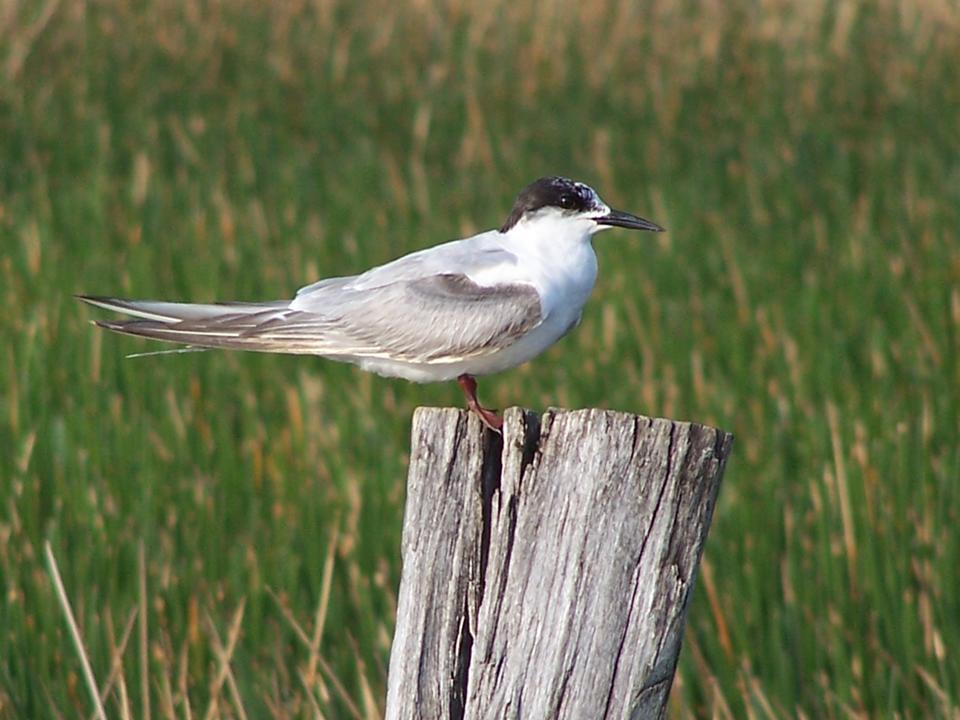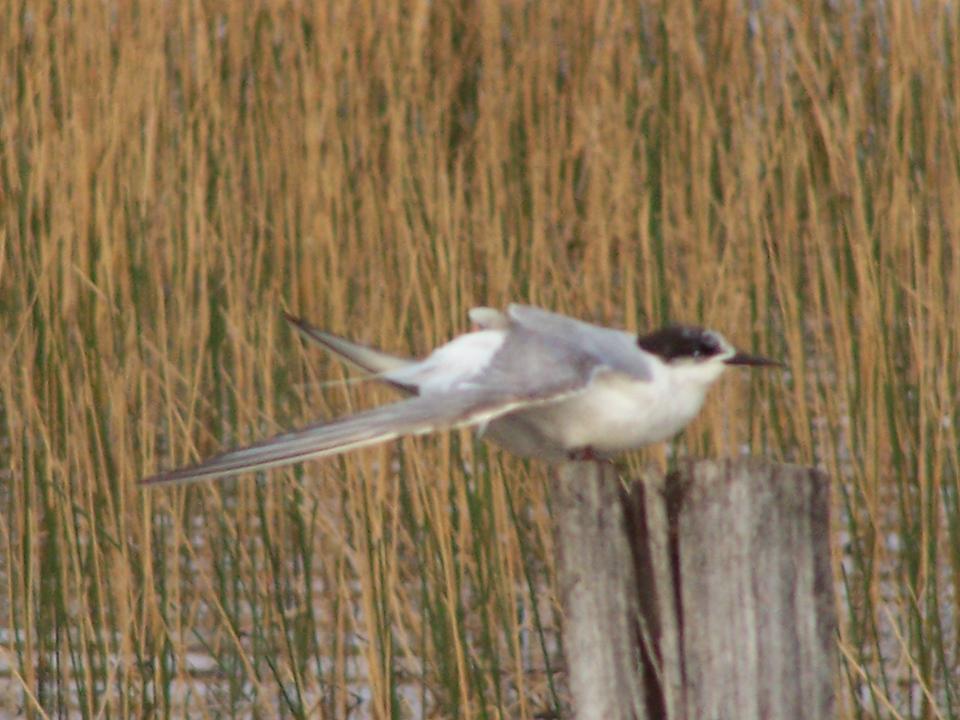


FIG 1: Common Tern Sterna hirundo Estancia Laguna Blanca, Departamento San Pedro, Paraguay 17 September 2006 (Photo Paul Smith).
COMMON TERN Sterna hirundo: A NEW SPECIES FOR PARAGUAY
Paul Smith, Hugo del Castillo and Rob Clay
Un individuo de Sterna hirundo registrado en Estancia Laguna Blanca, Departamento San Pedro el 17 de Septiembre 2006 representa el primer registro de la especie en Paraguay.
A Common Tern Sterna hirundo was observed, photographed and filmed on 17 and 18 of September 2006 at Estancia Laguna Blanca, Departamento San Pedro, Central Paraguay (23o48´S, 56o43´W) during a FAUNA Paraguay tour. The bird was alone and perched prominently on a submerged post in full sun near to the edge of the lagoon, allowing a close approach. It flew gracefully with shallow wingbeats on long, pointed wings showing a white forked tail and occasionally diving for prey.
The individual´s plumage was consistent with that of a winter adult (Alvaro Jaramillo pers. comm.) but difficulties in ageing Common Terns in the field prevented us from unequivocally ageing the bird (White & Kehoe 2001). The incomplete crown was brownish-black and worn, with fresh white feathers emerging on the leading edge of the crown indicative of an alternate bird moulting into basic plumage and consistent with what might be expected from an adult boreal migrant at the
time of the observation (Alvaro Jaramillo pers. comm.). Above the wings were mostly pale bluish-grey extending beyond the tip of the tail at rest, with a distinct dark carpal bar and clearly darker primaries. The greater coverts and secondaries were worn. In flight dark edges to the upper and underwing primaries were visible. The long, thin bill was wholly black and the legs dull reddish.
FIG 2: Same bird extending wing and showing dark edges to primaries and broad dark leading edge of upperwing, Estancia Laguna Blanca, Departamento San Pedro, Paraguay 18 September 2006 (Photo Paul Smith).

Confusion species
Both regularly occurring tern species in Paraguay (Large-billed Tern Phaetusa simplex and Yellow-billed Tern Sterna superciliata) are yellow-billed at all ages (Smith & Clay in press). The similar Arctic Tern Sterna paradisea has previously been reported as a vagrant to Paraguay (Hayes et al 1990), and careful observation was required to eliminate that species. Structurally the observed individual is long-billed and long-legged with a flattish, square head typical of Common Tern, Arctic Tern being shorter-billed, shorter-legged and shorter-necked with a smaller, rounder head. At rest the presence of a dark carpal bar (visible as a dark leading edge of the upper wing in flight) and clearly darker primaries were indicative of Common Tern, Arctic Tern tends to show a more uniform colouration to the upper wing with only slightly darker primaries and the carpal bar indistinct or absent. In flight darker edges to the outer primaries were noted on both sides of the wing.
Common Tern is a shorter-tailed species than Arctic Tern, in the latter the closed wings fall well short of the tail tip. Austral South American Terns Sterna hirundinacea old enough to have a black crown always show some red or reddish on the bill (Alvaro Jaramillo pers. comm.)
Conclusion
This is the first record of Common Tern from Paraguay. Previous reports of the species in Paraguay (CDC 1995, 1997) are in error and refer to the first Paraguayan record of Arctic Tern which was initially misidentified as a Common Tern (Clay and del Castillo 2004). Common Tern has been reported from several inland localities in Argentina to the south of Paraguay (Mark Pearman pers. comm.) and its occurrence in Paraguay as a vagrant or irregular passage migrant is perhaps unsurprising.
References
1.Centro de Datos para la Conservación (CDC) 1995 Lista Preliminar de Vertebrados del Paraguay. Asunción: DPNVS/SSERNMA/MAG.
2.Centro de Datos para la Conservación (CDC) 1997 Lista Preliminar de Vertebrados del Paraguay: Revisión y Actualización. Asunción: DPNVS/SSERNMA/MAG
3.Clay RP, del Castillo H 2004 Lista Comentada de las Aves de Paraguay. Guyra Paraguay, Asunción.
4.Hayes FE, Goodman SM, Fox JA, Granizo Tamayo T, López NE 1990 North American Bird Migrants in Paraguay. Condor 92: p947-960.
5.Smith P, Clay RP in press A Field Guide to the Birds of Paraguay. Helm, London
6.White SJ, Kehoe CV 2001 Difficulties in determining the age of Common Terns in the field. British Birds 94: 268-277.
Acknowledgements
Rob Clay, Alvaro Jaramillo, Ken Mullins and Mark Pearman helped us to confirm the identification of the individual. Thanks to Richard Smith and Professor Kirti Chaudhuri who accompanied us in the field.
Designed by Paul Smith 2006. This website is copyrighted by law.
Material contained herewith may not be used without the prior written permission of FAUNA Paraguay.
Photographs on this web-site were taken by Paul Smith, Hemme Batjes, Regis Nossent,
Alberto Esquivel, Arne Lesterhuis, José Luis Cartes, Rebecca Zarza and Hugo del Castillo and are used with their permission.



